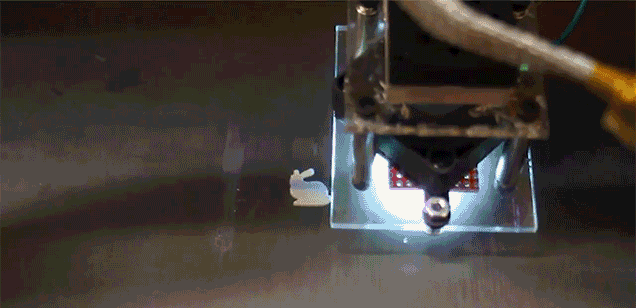One day 3D printers will be able to churn out working electronics and fully-functional machines, instead of just plastic parts. And that day is now slightly closer with MIT CSAIL’s MultiFab 3D printer that can use ten different materials to build working devices in a single print run.
For 3D printers to fully realise their Star Trek “replicator” potential they can’t just be one part of the manufacturing process, they need to do it all. The holy grail of 3D printing is to one day let anyone recreate any device with a simple button press. We want to be able to walk away for a few minutes and return to find a fully functional replacement mobile phone sitting there, not just the plastic support that holds a phone’s volume buttons in place.
MIT CSAIL’s MultiFab 3D printer is a huge step in that direction. Not only is it cheaper than existing multi-material 3D printers that can cost as much as a quarter of a million dollars, it’s actually far more capable because it can print everything from plastic housings, to lenses, to even circuit boards, wiring, and everything that a device might need.
There are already 3D printers capable of churning out functional circuits and electronics, but the beauty of the MultiFab is that they can be printed right along with the rest of the components that make up a complex device. Instead of having to print all of the components in separate machines that each use different materials and then assemble them all later, the MultiFab is a one-stop shop. It’s as close to building Star Trek’s replicators as we’ve gotten so far.
But multiple materials isn’t the MultiFab’s only clever trick. The 3D printer also has built-in 3D scanning capabilities, which serve two very useful purposes. They allow the printer to constantly monitor how a printing job is going, analysing the results after every pass to ensure no mistakes were made. And if there were, it can correct for them in subsequent printing passes.
The built-in 3D scanner also allows the MultiFab to add onto existing objects. Want to 3D print your own custom smartphone case but guarantee it fits perfectly? Instead of measuring and re-measuring the device to ensure your 3D model is as precise as possible, you can just place it on the MultiFab’s printing bed and not only let it generate a scanned 3D model, but also print directly onto it. Now if only we could get these machines to make the perfect mug of Earl Grey tea.
